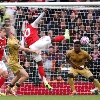
Kelly strategy was created to be used when playing in online casinos and on financial markets. Little bit later, it was adapted for sports betting.
It’s worth remembering that the bookmaking firm is almost always in more advantageous position that the player. However, the Kelly strategy (also known as Kelly criterion) was designed to solve this problem.
Compared to other methods of playing against a bookie, Kelly strategy has no rigid rules or a unique algorithm of action.
The essence of this strategy is that among all events and their possible outcomes offered by the bookie, the most undervalued are chosen. By default, they cannot be favorites, because their chances of success and as a result, their odds are overvalued from the start.
Therefore, we’re interested in underdogs with odds of winning equalling 2 and more.
Kelly criterion is calculated by a simply formula: ((bookmaker odds Х probability)-1)/(bookmaker odds -1),
and the probability of the outcome is determined by the player by the value within 1 and 0 range.
The main difficulty in utilising this strategy lies exactly in calculations, because it offers no definite formulas for success and essentially, the bettor has to perform the same job as the bookie by actually calculating a line.
Luckily, this probability can be easily guessed. For instance, if the bookmaker values underdog odds of victory as 5.5 but you’re absolutely sure (and your assuredness is backed by the stat), that that team wins every 4th home match, this makes for the probability value of 0.25К
According to the rules of maintaining bankroll, which are used by this strategy, the amount of your account should be at least 15 times bigger than the bet. For instance, if you have $1500 on your account, your bet should not exceed $100.
Let’s return to the Kelly criterion. With its help we’ll figure out the exact size of the bet for the particular event.
So, the bookie odds are 5.5 and we have valued the probability as 0.25. Let us add the values into the formula:
((5.5х0.25)-1)/(5.25-1)=0.088
The received results is multiplied by the bankroll, in this case $1500.
0.088х1500=132$ - the precise size of the bet on the event.
Similar calculations are done every time after a change in bankroll and/or choosing of the new event with different odds.
It’s worth noting that bets on favorites are unprofitable in the long run, due to the fact that loss with these bets always outweighs the winnings. Bets on underdogs make sense only when the odds exceed the value 3.5 According to statistics, 30% of games either end in a draw or are won by the lesser team.
















